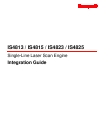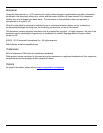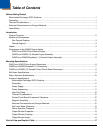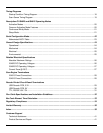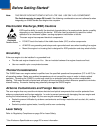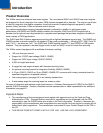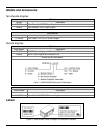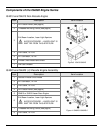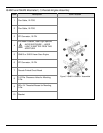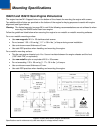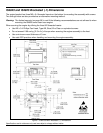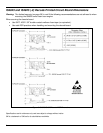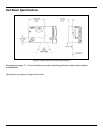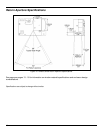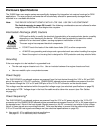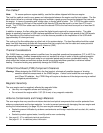
1
Before Getting Started*
Note: THIS DEVICE DOES NOT COMPLY WITH 21 CFR 1040. USE ONLY AS A COMPONENT.
The limited warranty (on page 38) is void if the following considerations are not adhered to when
integrating an IS4800 series scan engine into a system.
Electrostatic Discharge (ESD) Cautions
ESD has the ability to modify the electrical characteristics of a semiconductor device, possibly
degrading or even destroying the device. ESD also has the potential to upset the normal
operation of an electronic system, causing equipment malfunction or failure.
The scan engine has exposed electrical components.
• DO NOT touch the leads of the visible laser diode (VLD) or other components.
• ALWAYS use grounding wrist straps and a grounded work area when handling the engine.
• Mount the engine in a housing that is designed for ESD protection and stray electric fields.
Grounding
If the scan engine is to be installed in a grounded host:
• The die-cast engine chassis is at +Vcc. Use an insulator between the engine chassis and host.
• Use non-metallic nylon or equivalent screws.
Thermal Considerations
The IS4800 laser scan engine series is qualified over the specified operational temperatures (0°C to 40°C) for
all operating modes. Make sure ambient temperatures do not exceed this range in order to obtain optimal
operation. Operating the IS4800 in continuous mode for an extended period may produce considerable
heating. This mode should be limited and sufficient airflow should be provided whenever possible to minimize
internal heating. Excessive heating may potentially damage the IS4800 engine.
Airborne Contaminants and Foreign Materials
The scan engine has very sensitive miniature electrical and optical components that must be protected from
airborne contaminants and foreign materials. In order to prevent permanently damaging the scan engine and
voiding the limited warranty (on page 38), the scan engine enclosure
must
• Sealed to prevent infiltration by airborne contaminants and foreign materials such as dust, dirt, smoke,
and smog.
be:
• Sealed to protect against water, humidity and be non-condensing.
Laser Safety
Refer to Regulatory Compliance on page 34 for Laser Safety.
* See Enclosure Specifications on page 25 for more information.



